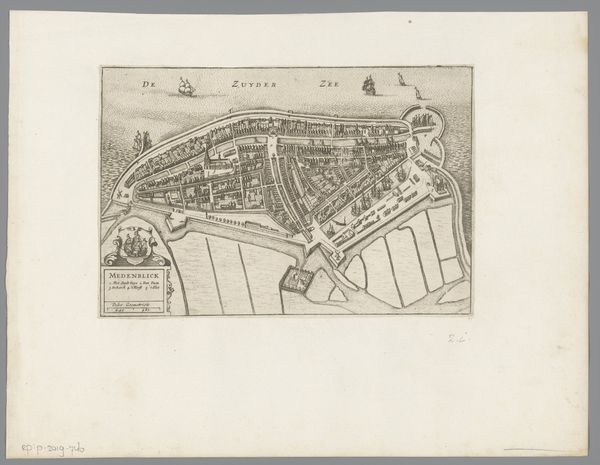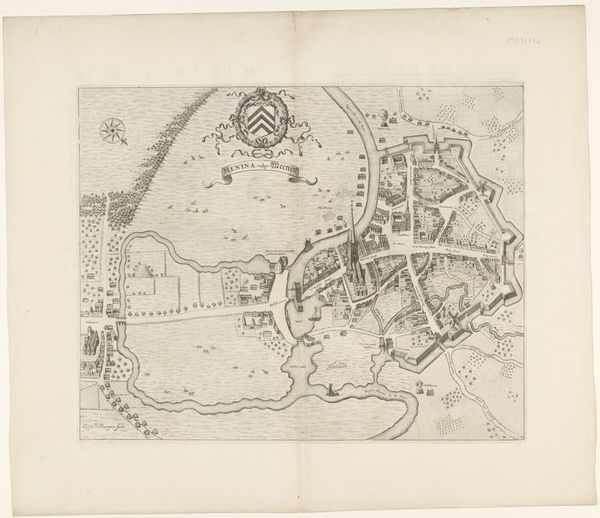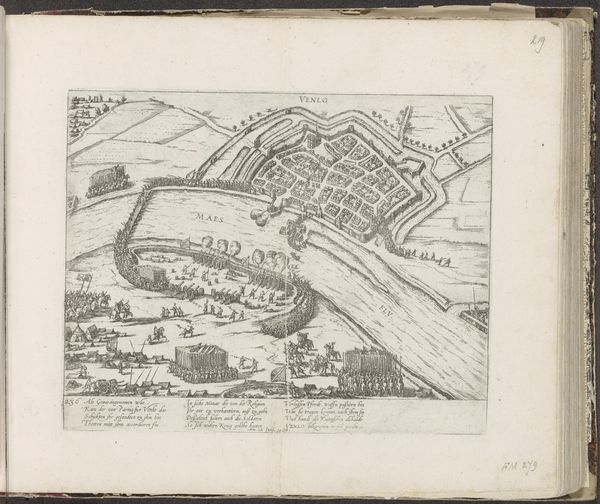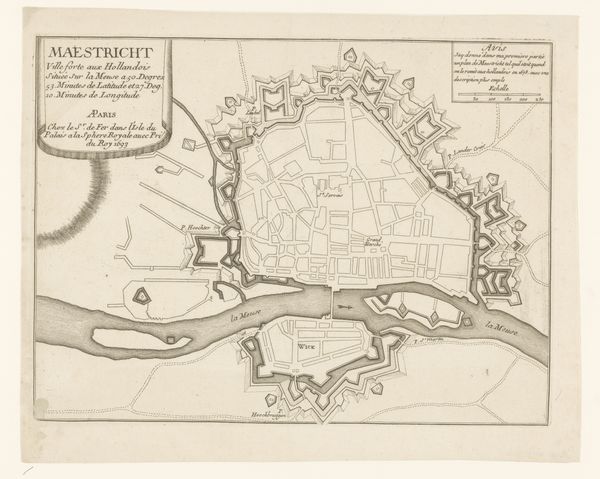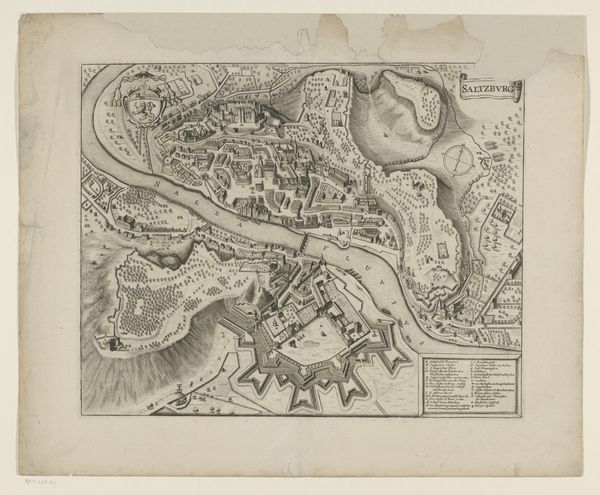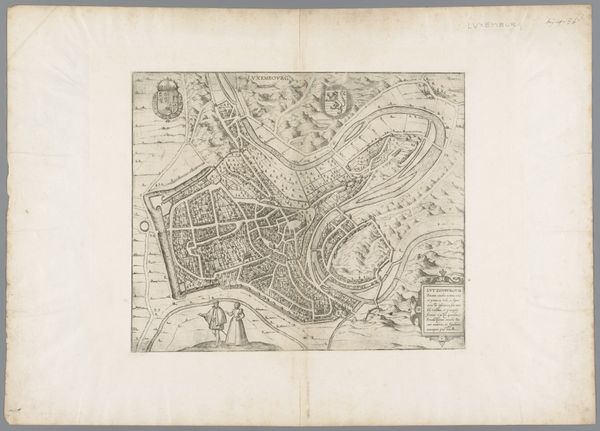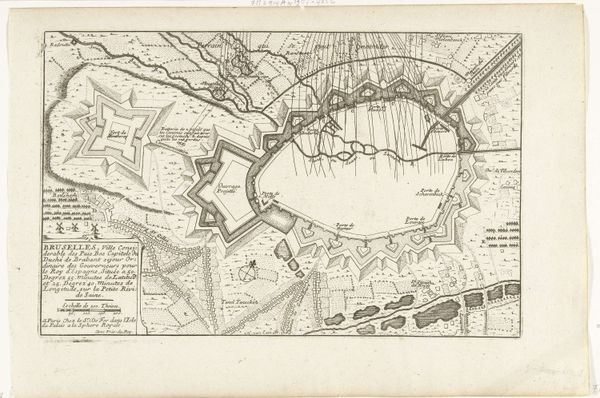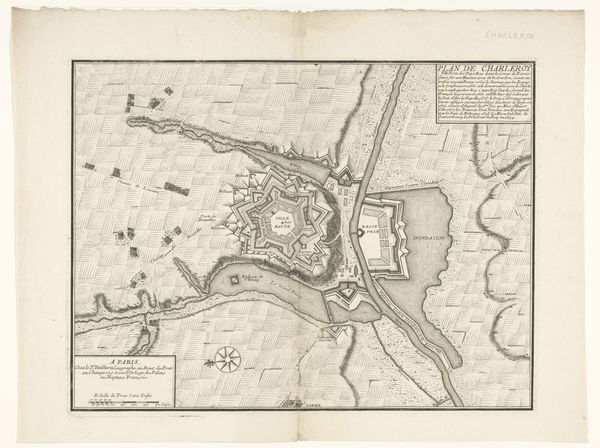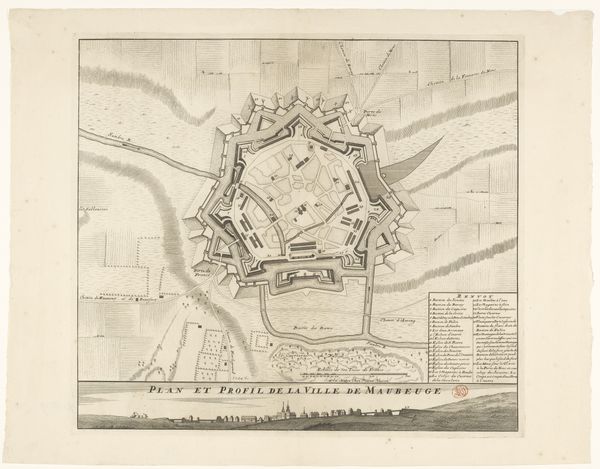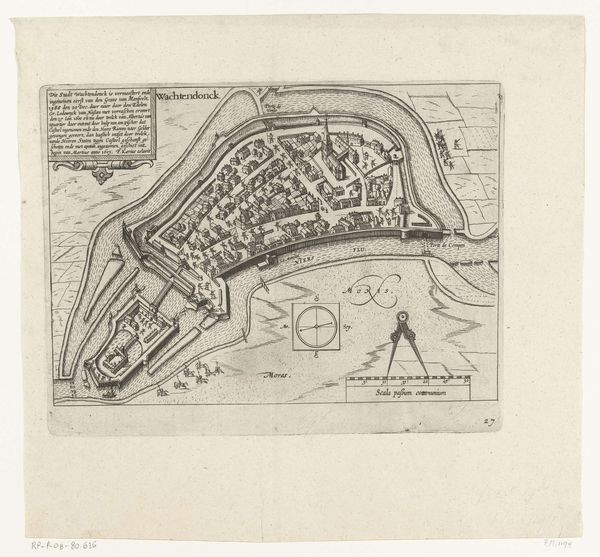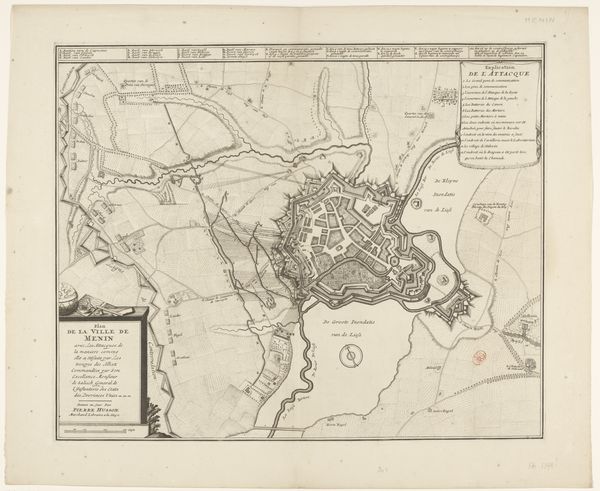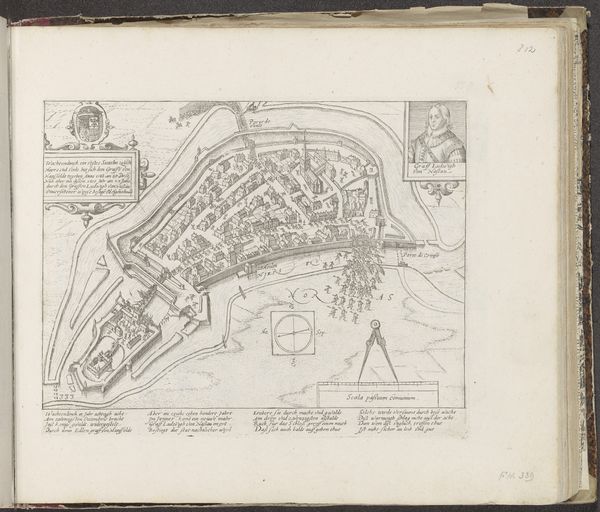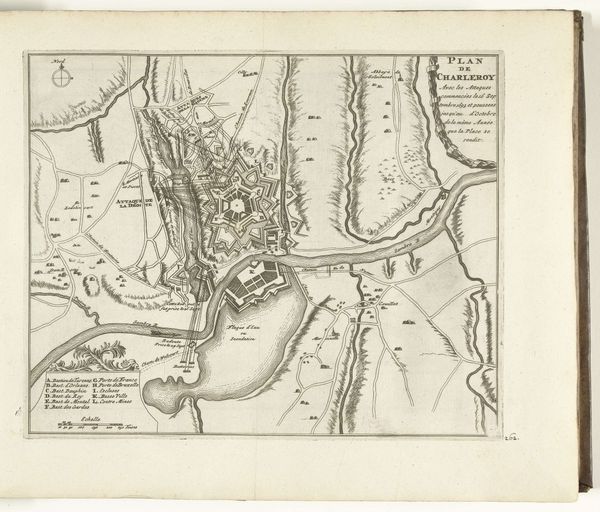
drawing, print, etching, pen, engraving
#
drawing
#
baroque
# print
#
etching
#
landscape
#
pen-ink sketch
#
pen work
#
pen
#
cityscape
#
engraving
Dimensions: height 211 mm, width 280 mm
Copyright: Rijks Museum: Open Domain
Curator: Before us is "Plattegrond van Maastricht, 1678," made sometime between 1690 and 1697 by Harmanus van Loon. It’s a pen, etching and engraving, depicting a bird’s-eye view of the city. Editor: It strikes me immediately with its intricate detailing and ordered structure. The lines, meticulously rendered, showcase an almost obsessive dedication to accuracy, yet it feels surprisingly flat, lacking depth. Curator: This piece transcends simple cartography; it is steeped in the sociopolitical climate of its time. The intricate fortifications you observe speak to Maastricht's strategic importance as a contested space during the conflicts between the Dutch Republic and other European powers. Editor: I see how the concentric layout of the city, framed by robust, angular ramparts, conveys an imposing sense of strength and strategic planning. Note the geometry of the defensive structures – each polygon a calculated response to siege warfare, forming layers of visual and literal obstruction. Curator: Exactly. Understanding this demands that we look beyond form. Who lived within those walls? What impact did constant military threats have on daily life, especially for women and marginalized communities often caught in the crossfire? The etching offers no immediate answers, inviting a deconstruction of the narratives that underpin its creation. Editor: I would add that the contrast of dense, dark hatching with areas of untouched paper produces an exquisite sense of textural variety that mimics stone, earth, and water. It moves beyond function; these compositional decisions guide our gaze, emphasizing the harmony and geometric coherence of the city. Curator: These aesthetic considerations shouldn’t blind us to the power structures inherent in this visualization of power. The very act of mapping, even aesthetically done, assumes authority, framing space within a specific ideological agenda. It’s important to investigate who benefits from such representation and at whose expense. Editor: Perhaps both. The work represents a time and a place, with a balance of careful detail with artistic intent, and its structure yields understanding if carefully contemplated. Curator: Absolutely. This meticulous plan can act as a lens through which to examine the lived realities and experiences that have molded the historical identity of the place. Editor: Precisely, and recognizing Van Loon’s emphasis can only further contextualize that narrative.
Comments
No comments
Be the first to comment and join the conversation on the ultimate creative platform.
